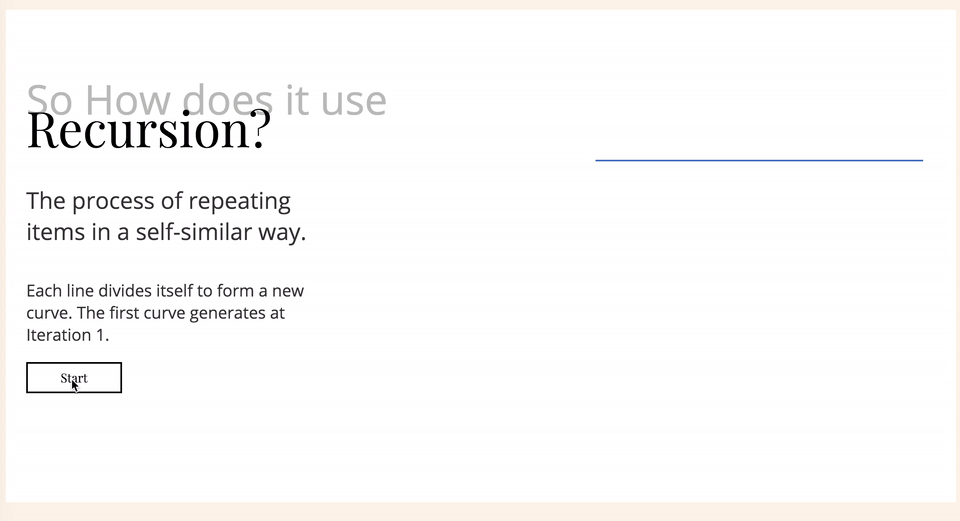Understanding Koch Curve
Explaining recursion through visualizations of the mathematical curve
Koch Curve is one of the earliest fractal curves to be described. It is created by dividing a line segment into three equal parts and the middle line is converted to an equilateral triangle wherein the base of the triangle is removed. It uses the concept of recursion to split itself into further Koch curves.
Koch Snowflake is formed by iterating the above concept on three sides of a regular triangle.
 The Koch Curve
The aim of the project was to explain the concept of recursion to high school kids through information visualization.
The Koch Curve
The aim of the project was to explain the concept of recursion to high school kids through information visualization.
Project Goals
The visualization was created with the following goals:
- The student will be able to explain the concept of recursion.
- The student will be able to explain the concept of Koch curve and Koch snowflake and how it is derived using recursion.
- The student will be able to identify why the Koch curve has an infinite perimeter.
Iterating through different representations
Different representations were tried using various color encodings. Most users failed to understand the replication of the Koch curve in these encodings. These encodings were harder to understand in larger iterations of the curve.






Three different styles of encoding that failed on user testing.
Finally, a two-tone encoding was used which made it easier to identify the replication of the pattern.


The two-tone encoding not only was easier to understand but also scaled well for small and large iterations of the curve
Final Implementation


